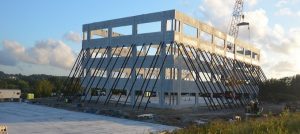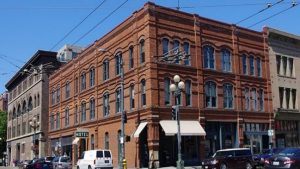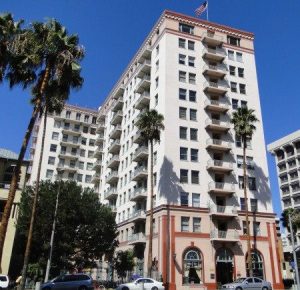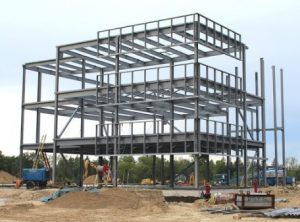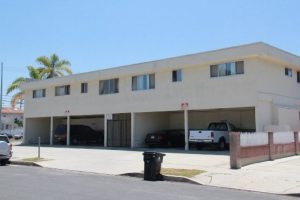Types of Buildings & Seismic Retrofits
There are many types of buildings when it comes to seismic retrofits including concrete tilt-up, URM (unreinforced masonry), non-ductile, steel frame and soft-story.
Concrete Tilt- up:
Early designs of these building types (Before 1997), had limited or weak connections from the roof to walls and continuity ties. With current engineering knowledge, it is well understood that these buildings need to be retrofitted to make them safer and perform better in the event of an earthquake. Because of the heavy concrete walls, in the event of an earthquake, these walls want to pull apart from the roof, creating a collapse hazard. Evidence from previous earthquakes suggests that these buildings can be quite dangerous during a seismic event and suffer extensive damage.
URM (unreinforced masonry):
A URM (Un-Reinforced Masonry building) is a type of building where load bearing walls, non-load bearing walls or other structures are made of brick, cinderblock, tiles or other masonry material that is not braced by reinforcing materials (rebar). Unreinforced masonry walls lack steel reinforcing bars, which add a lot of strength to the structure of a building.
Non-ductile:
Non-Ductile Concrete is a term to describe basic characteristics of these types of buildings. They are very strong but, brittle. “Non-ductile” means inflexible therefore, non-ductile concrete buildings are more likely to crumble or collapse in an earthquake, posing greater financial and life-safety risk.
Steel Frame:
Steel frame is a building design usually with a “skeleton frame” of vertical steel columns and horizontal I-beams, constructed in a rectangular grid to support the floors, roof and walls of a building which are all attached to the frame. Structural steel framing is a durable, reliable and sustainable option to build low-rise to high-rise building projects.
Soft-story:
A soft-story building is a multi-story structure built with a first floor that is open in nature, much less rigid (soft) than the floors above. There are many examples of buildings with soft-story conditions including multi-family apartment buildings with tuck-under parking or subterranean parking as well as retail centers with open storefronts and minimal reinforcement on at least one elevation. The general “openness” of the first floor creates the opportunity for structural damage during an earthquake because at least one elevation of the ground floor level lacks proper shear reinforcement to support the building.
For more information, please visit https://saundersseismic.com/service/commercial-retrofits/.

